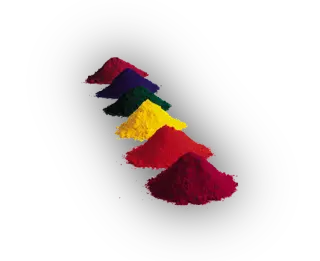Paint is indeed a combination of pigments, binders, and a diluent or thinner. Here’s a bit more detail on each component:
This combination results in a paint that can provide protection, colour, and texture to surfaces.
Whether you’re painting kitchen cabinets or creating a masterpiece, these ingredients play a crucial role in achieving the desired finish.
Pigments:
- Provide texture, colour, and hiding properties.
- Common pigments include titanium dioxide (for light colours), calcium carbonate, talc, clay, sand, and iron oxides.
- Pigments can be synthetic or natural, and are carefully selected to ensure safety.
Binders:
- Composed of synthetic and natural resins, they start as liquids but dry to form tough, durable films.
- In waterborne coatings, binders are usually latex emulsions of vinyl or acrylic copolymers.
- In solvent-borne coatings, binders are often alkyds, modified drying oils that are tough and long-lasting.
Diluents (Thinners):
- Thinners help to make paint easier to apply.
- Latex paints use water as a thinner, which is safe and easy to use.
- Solvent-based paints use petroleum solvents, which require careful handling due to VOC concerns but offer unique durability and adhesion properties.
Additives:
- Additives give paints additional properties like improved flow, stability, drying, de-foaming, mildew resistance, and viscosity.
- Examples include:
- Coalescents: Solvents that help latex particles fuse during drying for better paint films.
- Anti-Skinning Agents: Prevent surface drying in solvent-borne paints during storage.
- Pigment Suspending Aids: Dispersants and surfactants that promote stability and shelf-life.
- Viscosity and Flow Enhancers: Ensure superior application properties and finish.
The combination of these components results in paint that can provide protection, color, and texture to various surfaces, making it versatile for projects ranging from kitchen cabinets to artistic creations.

Pigments
Pigments provide the texture, colour, and hiding properties of paint, not unlike the mud, blood, and chalk used centuries ago. They usually take the form of a dry powder, and can be made from either synthetic or natural materials. Today, architectural coatings are formulated to be as safe as possible by ensuring that pigments are carefully screened and selected.
Titanium dioxide is the primary pigment ingredient that provides hiding in light colour paints. While any powder can pose a health hazard if inhaled in high concentrations, titanium dioxide(which is used also in cosmetics, soaps and certain food products) cannot be inhaled when used in a paint film and poses no risk to the user.
Other pigments commonly used in paint—including calcium carbonate, talc, clay, and sand—are naturally occurring materials that contribute various properties like gloss control, flow, and film build. Iron oxides are inorganic colour pigments, chemically akin to rust on metal, and are used to produce reds and yellows.
Binders
The binder portion of an architectural coating consists of both synthetic and natural resins that start out as liquids but dry to form tough durable films.
The properties of the binder largely determine the properties of the paint film. In waterborne coatings, the binder is usually a latex emulsion composed of vinyl or acrylic copolymers. In solvent-borne coatings, the binder is usually an alkyd, a natural drying oil modified chemically to be especially tough and long lasting.
Diluents
Latex emulsion paints are thinned with water and represent the ultimate in safety and ease of use. Solvent-based or oil paints are thinned with petroleum solvent which make them less convenient and require more care to be used safely.
Over the years, use of solvent-borne paint has diminished because of concern over volatile organic compounds (VOCs). However, solvent-borne paints still play an important role today because of their unique durability and adhesion properties.
Additives
Additional ingredients called additives give paints a variety of properties such as flow, stability, drying, de-foaming, mildew resistance and viscosity.
Coalescents
Also called film-forming aids, coalescents are solvents used in waterborne coatings that help fuse, or coalesce, latex particles in latex emulsion paints during the drying process. They make better paint films possible by permitting the use of harder resins in the coatings formulation. These harder resins result in interior paints that are scrub-resistant and durable.
Anti-Skinning Agents
Used only in solvent-borne coatings, anti-skinning agents prevent undesirable surface drying, or skinning, in the container during storage and shipment.
Pigment Suspending Aids
Pigment suspending aids are dispersants and surfactants that are present in most paints in very small quantities and help impart stability and promote shelf-life.
Viscosity and Flow Enhancers
These provide superior application properties and help achieve the best possible hiding and film appearance.
Is there anything more specific you’d like to learn about paint or painting techniques?
Add new comment